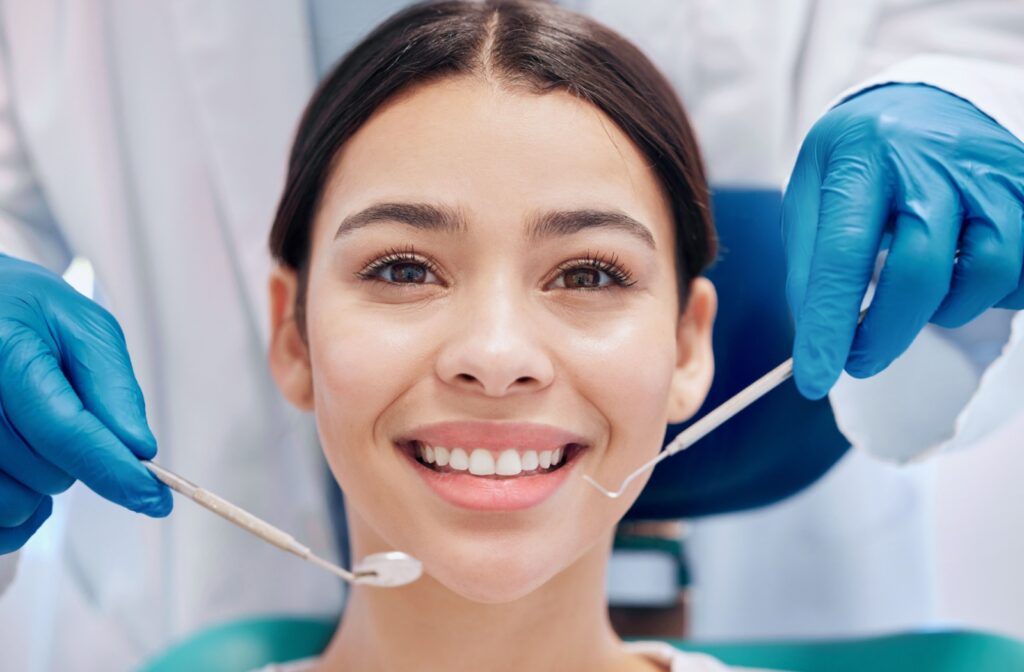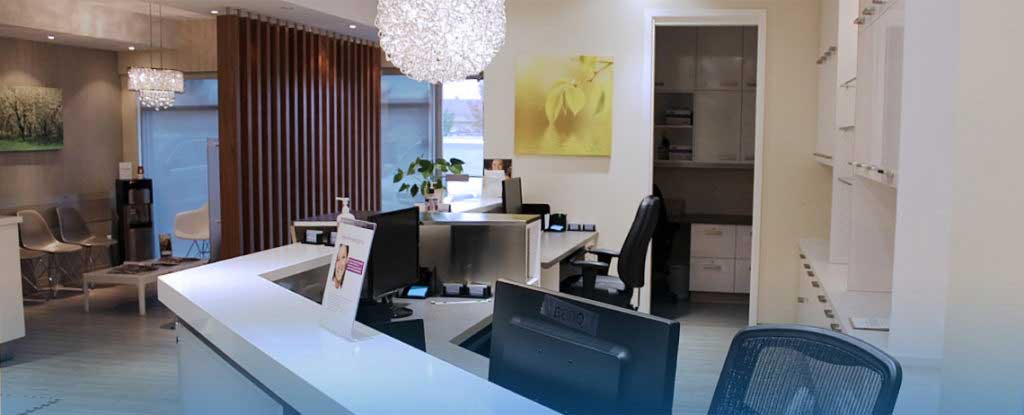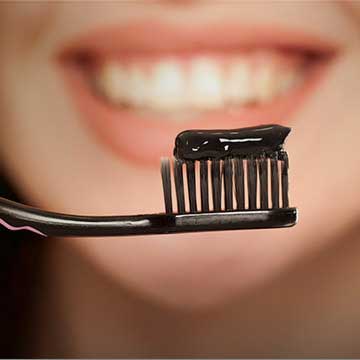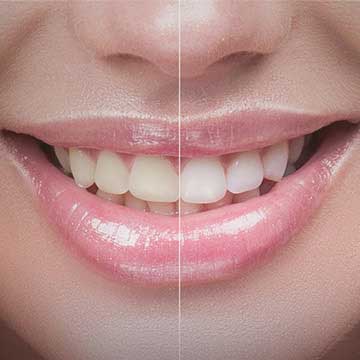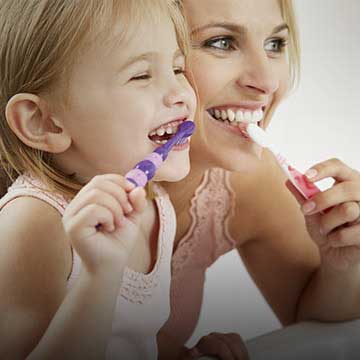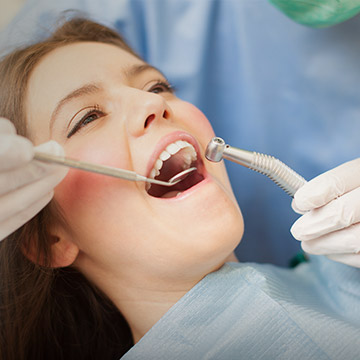Between work commitments, family responsibilities, and everything else on your plate, knowing exactly what to expect from your dental cleaning appointment helps you plan your day effectively.
Professional teeth cleanings typically take between 60-90 minutes on average. This timeframe can vary based on your oral health status and how long it’s been since your previous cleaning.
The Importance of Professional Cleanings
A trip to the dentist doesn’t have to be a daunting experience for you or your family. This preventive care helps protect against cavities, gum disease, and other dental concerns that can impact your daily comfort and overall well-being. We generally recommend cleanings every three-six months to maintain healthy teeth and gums.
Why this routine? Daily brushing and flossing certainly go a long way in maintaining healthy teeth, but plaque can still accumulate in hard-to-reach areas of your mouth. Over time, this plaque hardens into tartar, creating a stubborn buildup that requires professional tools and expertise to remove effectively.
Teeth cleaning sessions typically last 60-90 minutes, though appointments may extend longer if you haven’t had a cleaning recently or have complex oral health needs. Most cleanings pair with a comprehensive dental examination, allowing your hygienist to thoroughly clean your teeth while simultaneously identifying any areas that need the dentist’s attention.
During this assessment, your dental team looks for several important indicators of oral health, including signs of cavities or tooth decay, chips, breaks, or cracks in teeth, shifting teeth that might indicate alignment changes, early signs of oral cancer, and evidence of teeth grinding or clenching.
Regular cleanings are also an investment in your overall wellness, and there’s a close connection with your oral health. Studies have shown links between oral health and conditions such as heart disease and diabetes, making your dental cleaning appointments another piece of your complete health picture.
What to Expect During Your Cleaning Session
Your dental hygienist typically begins by examining your teeth and gums, checking for signs of gum disease, tooth decay, or other concerns that need attention. This initial assessment helps us understand your current oral health status and tailor the cleaning process accordingly.
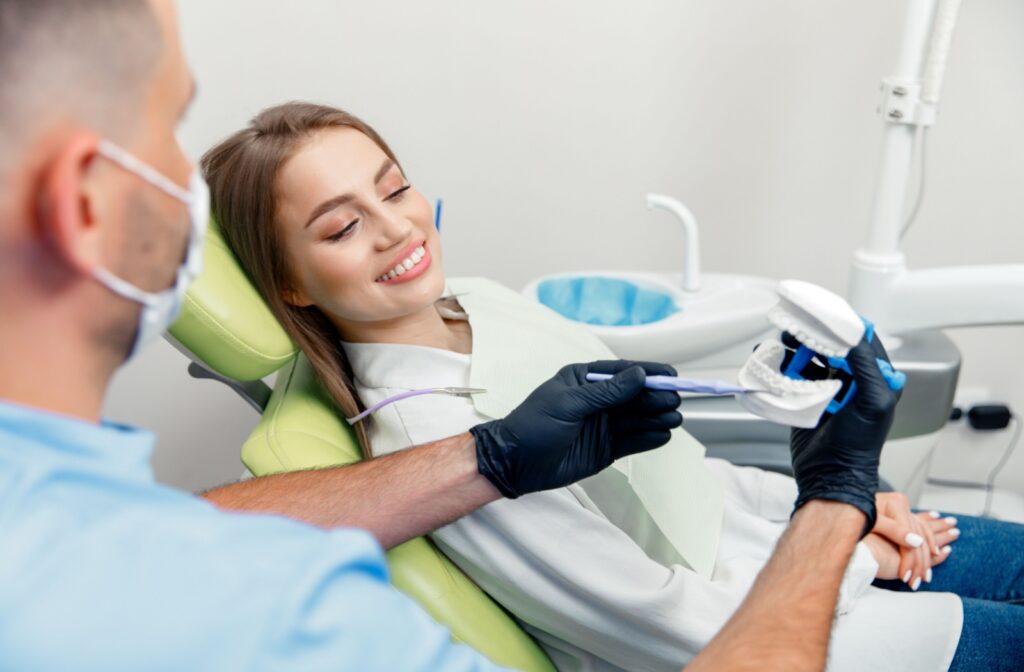
- The actual cleaning process starts with scaling, where your hygienist uses specialized instruments to carefully remove plaque and tartar buildup around your gum line and between teeth. This step can take up a majority of the time, especially when addressing significant buildup or particularly stubborn tartar deposits.
- Following the scaling process, your hygienist uses a special electric brush paired with slightly abrasive toothpaste to deep clean your teeth. This polishing step removes any remaining plaque and helps eliminate surface stains that have developed since your last cleaning.
- Professional flossing comes next, removing any particles that had been loosened during the scaling process from between your teeth and along the gum line. Your hygienist can access areas that might be challenging to reach effectively during your at-home oral care routine.
- Many appointments conclude with a fluoride treatment, where your hygienist applies a fluoride varnish to the teeth with a brush. This treatment strengthens tooth enamel and provides additional protection against cavity formation and treat sensitive teeth.
Throughout the process, your hygienist can address any questions or concerns about your oral health and provide personalized guidance on improving your at-home oral hygiene practices.
Finally, your dentist examines your mouth and teeth based on your hygienist’s findings. Your dentist can discuss any recommended treatments or procedures that might benefit your oral health, from routine follow-up care to specialized treatments like orthodontic or cosmetic procedures.
Maintaining Your Smile Between Appointments
Consistent oral hygiene practices between professional cleanings make your dental visits more comfortable and efficient. Here are some of our tips:
- Brush your teeth twice daily for two minutes using fluoride toothpaste.
- Floss or water floss once daily to remove plaque and food particles from hard-to-reach areas.
- Brush all tooth surfaces, including the inside, outside, and areas facing your cheeks and tongue.
- Gently brush your tongue to reduce bacteria and prevent bad breath.
- Replace your toothbrush every three months so it doesn’t lose effectiveness.
Remember, your diet can significantly impact your oral health between cleanings. Sugary foods and beverages contribute to tooth decay and gum disease development. When you enjoy sugary treats, consume them in moderation and brush your teeth afterward when possible. Make water your primary beverage choice throughout the day to stay hydrated and help rinse away food particles and bacteria.
Consider incorporating additional oral health tools into your routine, such as antimicrobial mouthwash or water flossers, especially if your dentist or hygienist recommends them based on your specific needs.
Ready for Your Next Fresh Start?
Your oral health journey deserves the attention and care that professional cleanings provide. Those 60-90 minutes on a routine basis represent an investment in your comfort, confidence, and overall wellness that pays dividends long after you leave the dental chair.
At Otara Dental, we offer thorough, gentle care that makes dental cleanings something to look forward to rather than avoid. Our skilled hygienists and welcoming team create an environment where your comfort comes first, and your oral health goals become our shared mission. Book your appointment today and discover how professional dental care can enhance your smile.


